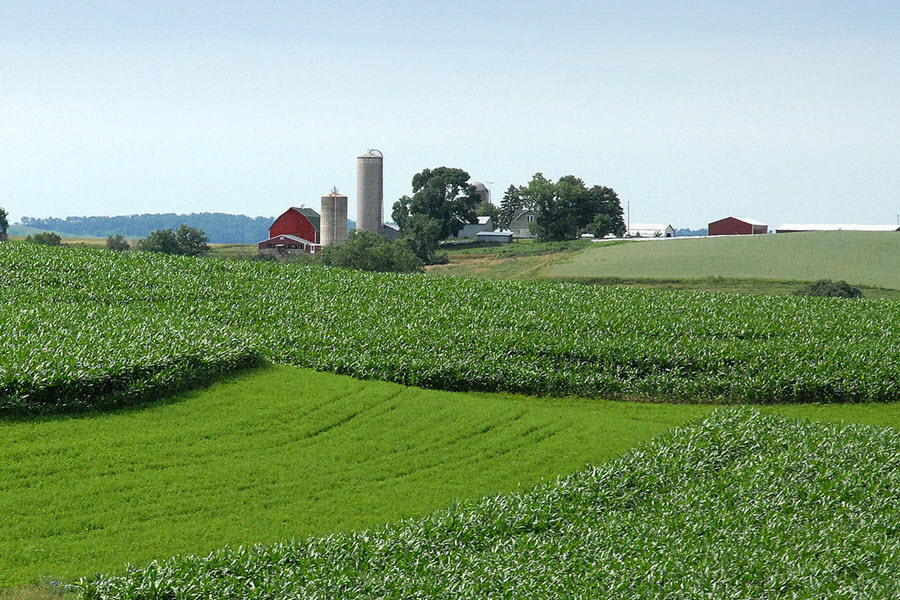Land use in the United States has undergone a dramatic transformation over the past few centuries. From the early days of horse-drawn plows to the modern era of self-driving tractors and renewable energy, our relationship with the land evolves to meet changing demands. But how did we get to this point? Read on to learn about significant milestones in our history that have shaped modern agriculture land use.
The first American agricultural revolution
From the 1850s to the early 1900s, farmers relied heavily on manual labor and practiced subsistence farming. Agriculture was the backbone of the economy, so innovations in farming were crucial for improving yields and feeding a growing population. The transition from hand power to horses was the most significant step in this revolution. However, by 1850, about 70-90 labor-hours were still needed to produce 100 bushels of corn.
Industrial revolution
In the early 20th century, the introduction of tractors and other motorized machinery made farming much more efficient and productive. With these technological advances, farmers were able to cover more land and produce crops using less manual labor, which helped meet the growing demand for food in the United States.
Sustainable farming
To decrease chemical applications and farming's impact on the environment, farmers began adopting natural pesticides and sustainable farming practices like crop rotation and planting cover crops. They started this practice in the 1980s, which also coincided with the introduction of GMOs (genetically modified organisms). This helped farmers grow more food using less water, land and pesticides.
The present and future of farming
As technological advances have made farming more efficient, the focus has shifted to making land use more environmentally friendly. Practices like less intensive tilling and carbon farming have become increasingly popular ways to store and limit greenhouse gas emissions.
Today, agricultural land use in the U.S. is the most diverse it has ever been. For example, approximately one third of the U.S. corn crop (5 billion bushels) is used to create ethanol. Biodiesel is another clean-burning fuel in high demand, and it’s made in part from soybeans. However, these aren’t the only renewable energy products that come from our farms. Agriculture partners are also helping to expand the base of energy production by leasing their land for wind and solar projects.
That might sound like it could reduce the capacity for food production; however, a recent study from Clean Wisconsin found that solar farms can produce more energy on significantly less land and at a lower cost than growing corn for fuel. The study also found that solar farms can meet the state’s future energy needs with as little as 3% of the state’s agricultural land, so there’s plenty of land available for both.
With farmers' focus shifting to environmentally friendly farming practices and the adoption of renewable energy, the future of land use in the United States looks bright. As we continue accelerating our transition to renewables, we are also focusing on contributing to a thriving agricultural community that benefits all and preserves the land for future generations of farmers.
Hear what one proud farmer has to say about leasing his farmland to create a better future and a lasting legacy for his family.

How has agricultural land use evolved?

Kaitlyn Koester
External Communications Intern
Published on May 04, 2023
Kaitlyn is an intern with the External Communications Team. She is a student at The University of Iowa, studying Journalism & Mass Communication and Event Management. Kaitlyn is passionate about sustainability and is eager to help tell Alliant Energy’s story in their journey to create a better future.
Recent Stories
Changing seasons: Tune your building for Spring
To optimize savings and comfort, you must regularly recalibrate sensors and controls to match changing weather and operating conditions.
Read More
Giving birds a safe place to land at solar sites
Partnership with the Central Wisconsin Kestrel Research Project in our solar fields promotes diversity in the environment.
Read More
Recognizing community need sparks volunteerism
Tyler Freye credits our company values with deepening his understanding of the problems many in our communities face.
Read More
